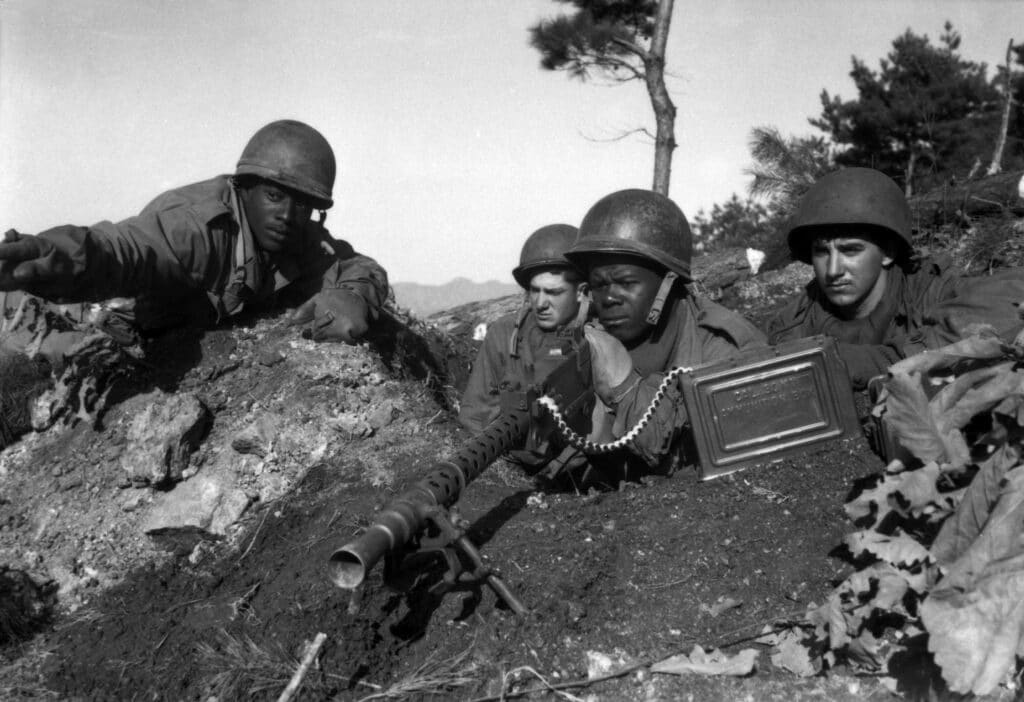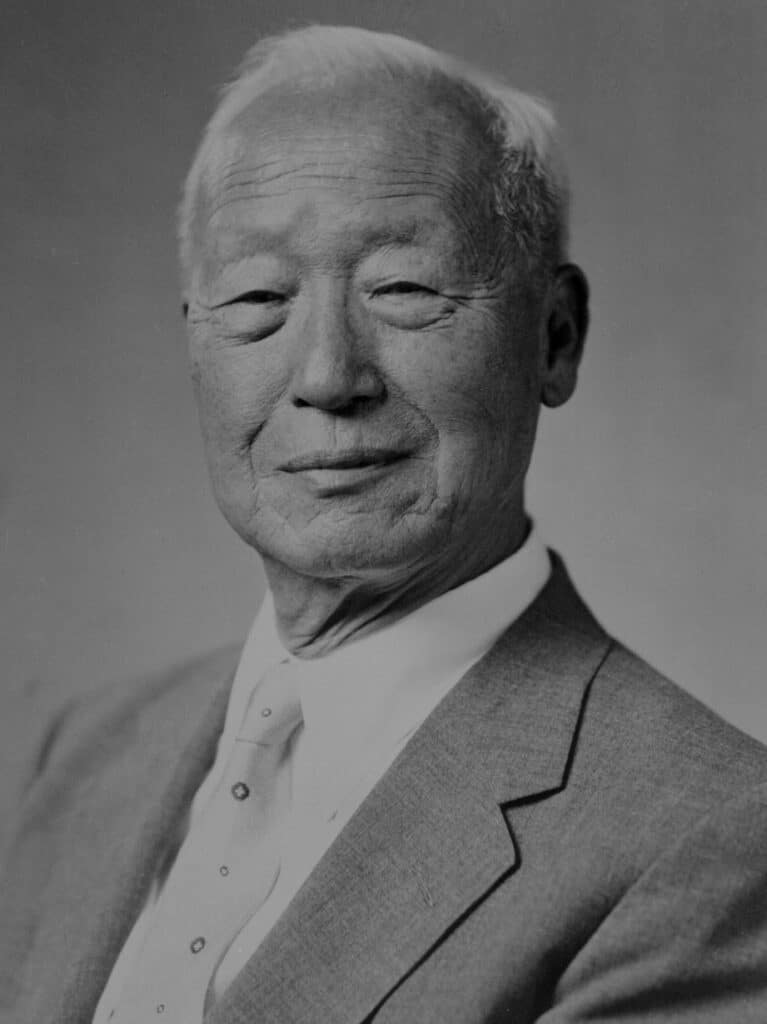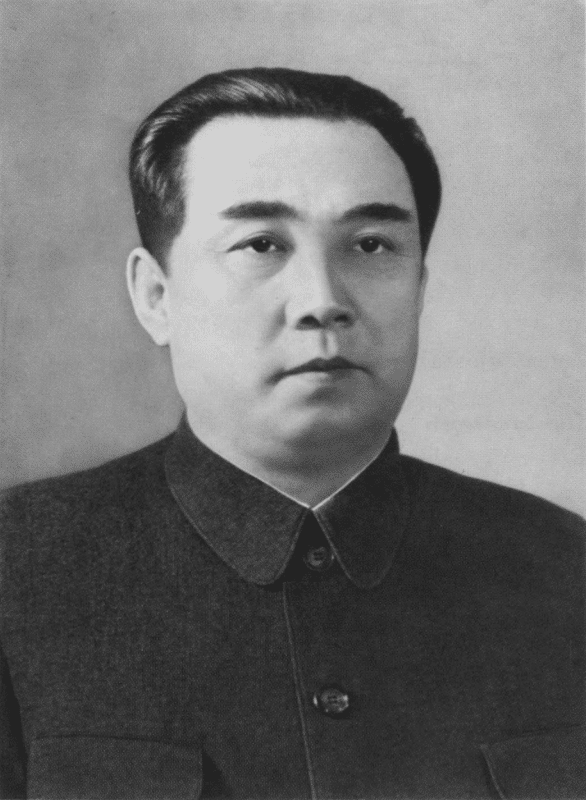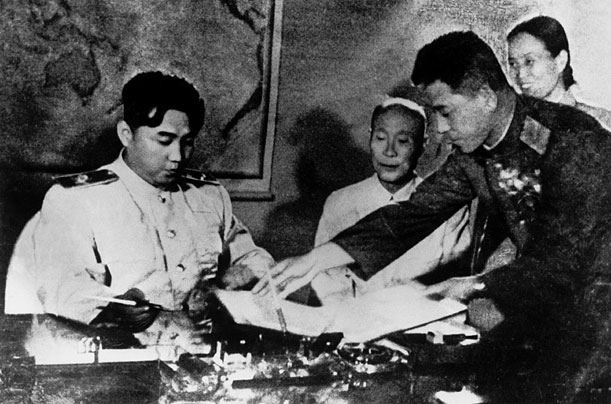The end of World War II promised an era of peace in Asia and the West.
The neutralization of Japan in the region led Korea to be under the control of two superpowers: the United States and the Soviet Union.
But what seemed an excellent decision to control the tides of war was the first step to the Korean War.
The division of the Korean peninsula at the 38th parallel put it in the middle of the Cold War, making it a pawn in the conflict between superpowers.

Road to War
On June 25, 1950, North Korean troops broke through the 38th parallel. Seventy-five thousand soldiers with Soviet tanks and arms broke the line and entered the South.
Thousands of Chinese troops aided them as Mao Zedong wanted to support the North and improve China’s prestige in the world. This was the start of the Korean War.
Three years of struggle followed that took the lives of 1.3 million people and destroyed the Korean peninsula.
The Americans and some of their allies supported the South, but neither the South nor the North gained much in the conflict.
What led Korea to erupt into civil war? What made the two superpowers use Korea as a pawn in their attempts to overthrow conflicting ideologies?
The Occupation of Korea in WWII
Before 1941, the United States had no interest in Korea. But the attack on Pearl Harbor changed all that.
Americans quickly realized the strategic value of the country’s location and made plans with Britain and China to render Korea free and independent after the war.
However, as the war progressed and the Soviet Union joined the Allies, the expansion of communism in Eastern Europe became a concern for the Americans.
When Stalin declared war against Japan, the peninsula’s fate became similar to Germany’s. It created a division between communist ideals and democratic leadership that persist even today.
From 1948 to 1950, the deterioration of their relationship led to both sides refusing to compromise or reach an agreement regarding the future of Korea.
The tension between North and South resulted in random skirmishes along the 38th parallel and soon broke diplomatic relationships in the UN.
At the time, the United States requested the UN to sponsor a referendum for Koreans to determine their form of government. But the Soviet-supported North declined to participate, citing the UN’s unfair terms.

The South decided to continue the vote, resulting in an authoritarian government in Seoul under Syngman Rhee, the first president of South Korea.
This election prompted the North to appoint its leader in retaliation. Kim Il Sung became the Premier and eventual President of North Korea.

The Spread of Communism and the Red Scare
One of the effects of World War II was the rapid expansion of communism in Europe and Asia.
Fearing the power of communist states, the US checked the loyalty of ordinary citizens and vied for influence in countries where they thought democratic ideals were losing to communist beliefs.
These actions led to a series of economic and political clashes with the Soviet Union, known as the Cold War. But this tension between world powers was not only felt in Korea.
This ideological battle manifested in Europe between East and West Germany, the space race, and the trade embargoes in communist nations.
In 1949, the fear of communism became stronger when the Soviets developed and detonated their first atomic bomb.
Chiang Kai Shek’s loss to Mao Zedong further stoked these fears as the East seemed destined to fall under communism.
In Korea, Cold War tensions led to an impasse as both sides refused to compromise on the Korean government’s future.
Once Kim Il Sung became North Korea’s chosen leader, he sought the support of the Soviets and China in invading the South. It was the final step on the road to a proxy war that was fought with Korean blood.
Third Cause of War: The Truman Doctrine
The Americans were not eager to fight China and the Soviet Union, but they wanted to contain communism and prevent its spread.
This policy of containment is called the Truman Doctrine. It outlined how democratic powers such as the United States must contain communism after World War II.
The doctrine used the Domino Theory to explain the spread of communism and possibly prevent its spread. It maintained that if communism would spread to one country, it could spread to other nations.
The United States then cited the need to prevent one nation (or domino) from falling so they could prevent other countries from becoming communist states.
As China and other Eastern European nations fell to communism, it seemed to the Americans that all the fears of the Red Scare were coming true.
So, on June 27, the United States asked all member states of the UN to provide military support in the South.
It also created the Defense Department, the State Department, and other agencies that would support the defense industry.
US forces arrived in Korea by June 30, while UN forces arrived on September 29.
Though they could retake Seoul and other cities, by December, China had intervened. It provided the support the North needed and repealed the UN forces.
The aftermath of the war
Though both nations had the resources to use atomic bombs, President Truman felt unsure about using them as a bargaining chip to win a limited conflict with Korea.
He had plans to bomb the Soviet Union, but Stalin was careful and only gave weapons, not manpower.
President Harry Truman commented during a press conference that he considered using the atomic bomb at the start of the war but only to prevent further conflict and deaths.
But this raised the concerns of many nations. They feared a larger conflict would result between the two nuclear superpowers.
One of these was British Prime Minister Clement Attlee, who talked to Truman immediately. Truman explained he had no intention of using the weapon unless it was for a “major military disaster.”
This meant that there was no clear winner in the conflict. The North had superior numbers, support from China, and armaments from the Soviets. The South pushed from the 38th parallel and gained some ground, only to be pushed back by the Northern forces.
In 1951, armistice talks started, but both sides failed to agree.
The talks dragged on for two more years. Finally, it was only in 1953 that the new leaders in Moscow sought to reach an agreement after Stalin’s passing.
The parties signed a ceasefire on July 27, 1953. By the end of the three-year conflict, hundreds of towns had been destroyed. It is estimated that 3.5 million soldiers and at least 1 million civilians lost their lives.

The armistice signaled the cessation of conflict in Korea. Representatives from the US Army, the UN Command, the Korean People’s Army, the Chinese People’s Volunteer Army, and Premier Kim Il Sung signed the agreement.
Since then, many attempts have been made to broker a peace treaty to finally end the conflict between the countries.
In 2020, China, the United States, and even South Korean leaders met to push for a formal end to the war. Technically, the armistice is only a cessation of arms and not a peace treaty. Korea is still under the threat of war.
One of the major points of disagreement is the international appeal that North Korea give up its nuclear weapons arsenal.
In September 2022, the country’s leader went so far as to announce that the North would never relinquish its weapons of mass destruction.
North and South Now
The Korean peninsula remains a divided nation. Communist North has a strict one-party policy.
Its current leader is Kim Jong Un, the grandson of its first Premier, Kim Il Sung. It continues the policies that have been in place since the end of the war and still receives the support of China and Russia.
South Korea has emerged as an economic power in the region. It has one of the highest GDPs in the world and is home to many of the world’s technology and electronics companies.
It has also become a cultural powerhouse, with the popularity of K-pop across the globe dominating music and movies.
Between these two nations is the 38th parallel, which did not change even after the end of the Korean War. A symbol of the futile effort of those who took part in the Korean War, it is now a military demarcation line, an area where North and South can meet.
For now, it symbolizes the separation of the two Koreas, a marker of its continuing effort to find peace and possibly unification.
Sources
https://www.history.com/news/korean-war-causes-us-involvement
https://www.history.com/this-day-in-history/soviets-explode-atomic-bomb
https://history.state.gov/milestones/1945-1952/truman-doctrine
https://www.history.com/topics/cold-war/red-scare
https://www.pbs.org/wgbh/americanexperience/features/bomb-korean-war/
https://www.reuters.com/world/asia-pacific/skoreas-moon-promises-final-push-nkorea-peace-2022-01-03/

